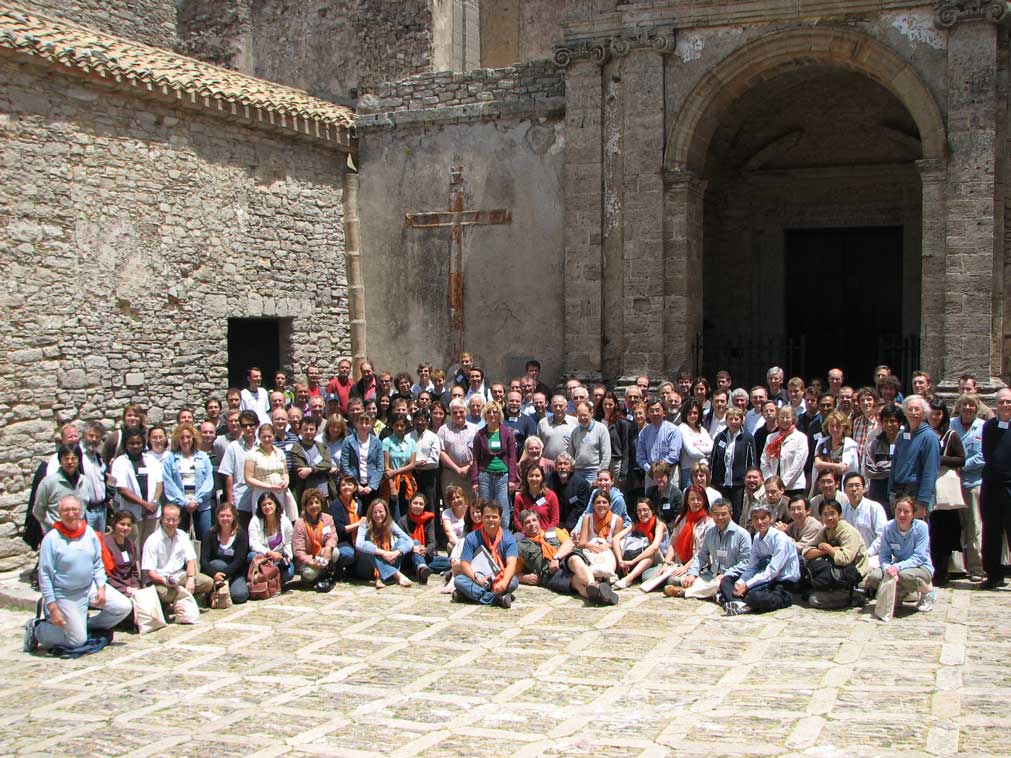
A Report
The major focus of the meeting was on structure and related function for several families of biological macromolecules, with some prominence being given to viruses. The topics covered at the meeting ranged from structural investigations of small molecule interactions with proteins, multiprotein cellular assemblies, viruses and their interactions with host-cell receptors and antibodies, to entire cells. A fantastic array of new protein structures were presented, solved using experimental techniques including crystallography, electron microscopy, nuclear magnetic resonance and single-molecule spectroscopic techniques. State-of-the-art advances in technology were highlighted, and limitations and challenges of the individual approaches were discussed.
Notwithstanding the enormous variety of biological systems described and investigated, a number of common themes emerged. Major advances have often been the result of close interactions among structural biologists using diverse techniques and biologists, chemists, and physicists—multidisciplinary collaborations that can lead to great synergy. The “molecular machines” analogy linking the functioning of large multi-component assemblies with macroscopic machines was frequently invoked and the importance of understanding integration of the components was constantly emphasized. Beautiful computer graphics representations—both still and animated—of molecular and cellular processes were prevalent and left meeting participants with many vivid images of our expanding molecular atlas of living organisms.
Very exciting progress has occurred since the first Erice Meeting on Macromolecular Crystallography in 1976, when the macromolecular crystallography community was small, although when preparing the meeting Michael Rossmann, Director, claimed “We are already too many !”. At that time efforts were focused on studies of proteins with great natural abundance, a few tRNAs, and several plant viruses. Three-dimensional electron micrographic reconstruction techniques were in their infancy. In the intervening 30 years, numerous advances have revolutionized the field of structural biology at all levels. Recombinant DNA technology has made it possible to clone and overexpress even naturally scarce gene products in sufficient amounts for structural investigation, and improvements in microbiological and biochemical technology have permitted scale-up for production of high-quality samples for many purposes. The frontier in size for all structure determination techniques has expanded by orders of magnitude, resulting from technological advances such as synchrotron radiation, computer technology, superconducting magnets, algorithmic development in crystallography, NMR, and EM. What all of this means for structural biology: more and better structures!
Another striking feature of the meeting was how our understanding of biology and biochemistry is constantly being reduced to molecular level explanations. Nowhere was this more apparent than with macromolecular structure and the role of conformational changes in regulating and promoting biological processes. Molecules are able to recognize each other through basic chemical interactions, but dramatic changes in molecular shapes can occur as a result of environmental factors such as pH, ionic strength, and the presence of other molecules including co-factors such as ATP, a common unit of energy currency in biology. A number of systems were described in which binding of ATP and other factors led to large conformational changes; subsequent chemical processing such as hydrolysis of ATP leads to regeneration of the original resting conformation. An interesting insight from these collective presentations was that the largest conformational changes are often seen to occur upon binding of a co-factor such as ATP; the energy of hydrolysis is harnessed to bias directionality, and ensure time’s arrow, rather than to cause the largest movements.
Most lectures and photos are found in http://www.crystalerice.org/erice2006/2006.htm by clicking respectively on the pointers “The Virtual Course” and “Pictures by Eddy Arnold”.
Howard Einspahr presented a copy of International Tables Volume F: Crystallography of Biological Macromolecules, edited by Michael Rossmann and Eddy Arnold, as the IUCr Journals Prize to the best poster presented by a young scientist: the awardee was Bert Janssen, NL

The anonymous questionnaire filled in by participants at the
end of the ASI produced the following results. The traditional figure of merit
reached 3.30 (over a theoretical value of 4), to be compared with 3.25 calculated
in 2005; the averaged figure obtained from the question “How do you
score the value of the meeting to you (from 0 to 100, 100 maximum)”
is 88.8, just lower than the record value 90.5 obtained in 2005 .
.
Text provided by Eddy Arnold, and slightly modified, mostly on history and
statistics, by Lodovico